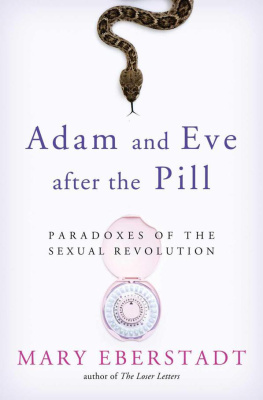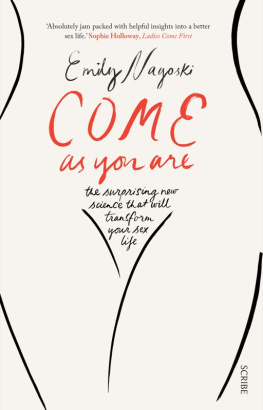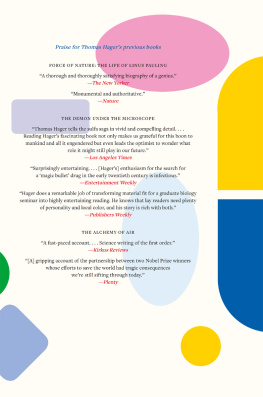The Rise of Viagra
MEIKA LOE
The Rise of Viagra
How the Little Blue Pill Changed Sex in America

NEW YORK UNIVERSITY PRESS
New York and London
www.nyupress.org
2004 by New York University
All rights reserved
Library of Congress Cataloging-in-Publication Data
Loe, Meika, 1973
The rise of Viagra :
how the little blue pill changed sex in America / Meika Loe.
p. cm.
Includes bibliographical references and index.
ISBN 0814752004 (cloth : alk. paper)
1. SildenafilSocial aspectsUnited States.
2. SexUnited States. I. Title.
RC889.L64 2004
616.6922061dc22 2004005125
New York University Press books are printed on acid-free paper,
and their binding materials are chosen for strength and durability.
Manufactured in the United States of America
10 9 8 7 6 5 4 3 2 1
To Gramps,
master of the printed word,
role model,
friend
Contents
Acknowledgments
Like Viagra, this book has been a collaborative endeavor. In volunteering their time, energy, space, colleagues, and advice, the following individuals and institutions have made this book what it is.
There would be no project without the generosity and assistance of my informantsthe doctors, consumers, pharmacists, pharmaceutical representatives, and senior women who took time out to talk with me about Viagra and what it means to them. Additionally, the twelve original members of the Working Group helped me to realize where I stood in relation to my project. Thank you all for trusting me to represent your views fairly and honestly. Your influence is on every page of this book.
My academic mentors at the University of California at Santa Barbara read this work over and over, and supported and encouraged its development over the years. Beth Schneider grounded me, and assisted tremendously in guiding and organizing my fieldwork, my writing, and my calendar. Laury Oaks always provided consistent, indispensable feedback and nudged my thinking in new directions. Mitch Duneiers passion for ethnographic methods encouraged me to capture this emergent phenomenon. Constance Penleys lesson that consumption is production forms a basis for this project. And Sarah Fenstermakers theoretical lens and wisdom inform this work as a whole. These individuals use their own research to promote positive social change, and this continues to inspire me.
My colleagues at the University of California at Santa Barbara were invaluable for their thoughtful feedback at all stages of the game. For help in writing, chapter by chapter, my sincere appreciation goes to Mary Ingram, Lisa Torres, Michele Wakin, Hazel Hull, Lyn Gesch, and Christopher Kollmeyer. Additionally, the gender studies proseminar participants at UCSB were essential in helping me organize, analyze, and theorize my data. I must thank Juliet Williams, Joanna Davis, Susan Dalton, Tricia Drew, Rachel Luft, Rani Bush, and Sara Jones for going out of their way to advise and encourage me in the field and at my computer.
This project changed shape as I met and had stimulating conversations with inspiring people along the way. Ilene Kalish and the production staff at NYU Press as well as my generous reviewers at Duke University Press and Routledge helped me enormously in revising this book for a general audience. For their guidance, I also thank Leonore Tiefer, Christine Williams, Paula Treichler, Carol Tavris, Peter Conrad, Peter Nardi, Jodi OBrien, Verta Taylor, Michael Kimmel, Ken Plummer, Harvey Molotch, Howard Becker, Jack Sutton, Chris Bobel, Jennifer Reich, Heather Hartley, Jennifer Fishman, Laura Mamo, Annie Potts, Amy Allina, and Rafael Peres. Gratitude goes to Jessica Kinstlinger for her generous hospitality in Boston, and to the Woodrow Wilson Foundation, the University of California at Santa Barbara, and Colgate University, for making this project possible. My favorite librarians, Sherri Barnes and Ellie Bolland, have been extremely helpful.
Most recently, Im indebted to my supportive colleagues at Colgate University for advice and encouragement in the last stages of writing. This includes my research assistants, Meg Lyons and Laura Lyman, who were terribly dedicated to the end. Special thanks go to Carolyn Kissane, Mary Moran, Diane Williams, Christopher Henke, Ellen Kraly, Adam Weinberg, Don Duggan-Has, Carolyn Hsu, Marilyn Thie, Warren Blumenfeld, Karen Luciani, Molly Ames Baker, Don LaFrance, Vige Barrie, Tim Sofranko, and Charlie Melichar.
And finally, this project would not have been possible without the family members and friends who have believed in me and this project from the beginning, helping with my day-to-day stresses, asking after me, talking about this project with their friends and doctors, sending me articles, doing the dishes night after night, and helping me to keep this project in perspective. This book is dedicated to youhow lucky I am to have you all in my life!
The Rise of Viagra

From Cartoon Bank
Preface
Bob Dole, Bill Clinton, Bazooms, and Me
STRANGE, YOU SAY. A woman has written a book about Viagra. I wonder how she got interested in that. Well, Ill tell you. After all, you should always know where an author is coming from. Im from California, but my academic interest in men and sex goes back to a place I call Bazooms: a food establishment where waitresses wear short shorts and tight tank tops and hula-hoop in between orders. In the early 1990s, Bazooms was the second-fastest-growing restaurant chain in the United States. This, coupled with its controversial reputation, was enough to get me intrigued, and my burgeoning sociological eye and general curiosity resulted in a job. So, in the 1990s I was working as a Bazooms girl. As it turned out, Bazooms was a fascinating and disturbing place to learn about how sexual and gender expectations are both taught and reinforced by our social institutions.
At Bazooms, you are practically handed a script when you walk in the door. Inside, the floor is a stage, and numerous performances take place. As a Bazooms girl I was taught to smile, flirt, flaunt it, and glory in being the center of attention. I also learned, indirectly, that the Bazooms customermale, of courseis expected to joke, ogle you, flirt, and generally act boisterous while consuming pitchers of beer, buffalo wings, and televised sporting events. After all, Bazooms is a guys fantasy (actually, six guys in Florida came up with the idea), and Bazooms girls are supposed to help that fantasy along. This is what youd expect from a sports bar named after breasts, right?
Well, I discovered that like any rich cultural site, Bazooms was not always the perfectly choreographed fun place it appeared to be. Sometimes men and women did not act as they were expected to act. At times, the Bazooms girls were visibly unhappy on the job. Many times, in the backroom they would bad-mouth the Bazooms customers. Even more surprising to me, some male customers were visibly uncomfortable at Bazooms. For example, one of my customers asked to be seated in the corner and proceeded to hide behind his sunglasses and hat. Later, he quietly commented that he felt ashamed and awkward in the restaurant, like one would feel in an adult bookstore. He was clearly out of his element, as were other customers I spoke with. All of these over-the-top Bazooms moments, including the failed gendered performances, the parents who brought their kids to Bazooms, and the sexualized encounters that went too farall of these moments made the research site and the business all the more complex, fascinating, and human.
Next page









